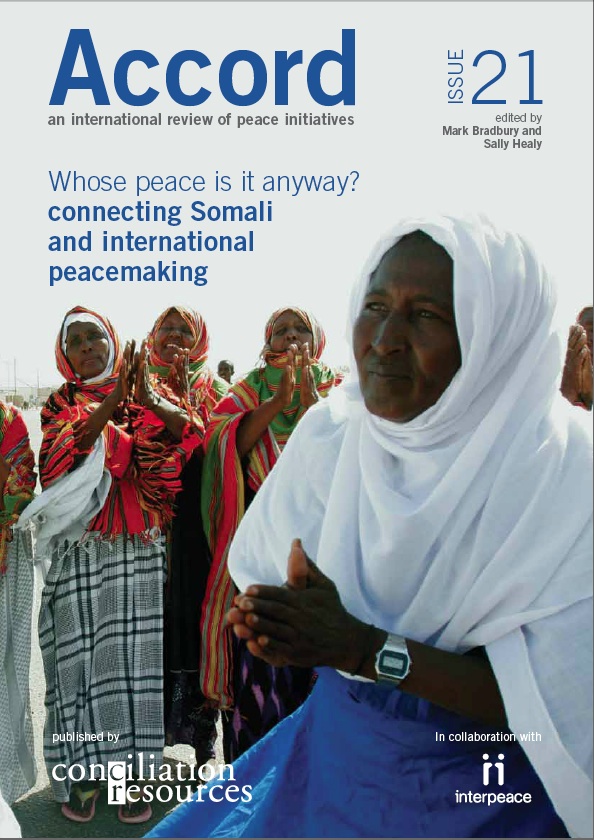Despite its successes, statebuilding in Somaliland has suffered both challenges and conflict. Two civil wars in the 1990s derailed the rebuilding process and almost shattered Somaliland’s territorial unity. And ironically the strengthening of the central government has also had some destabilising effects. For instance the beel political system was increasingly usurped by the executive, threatening to derail its ability to provide legitimacy and to safeguard clan interests.
But the promise of introducing electoral systems after the Hargeisa reconciliation conference in 1997 ultimately provided a much needed prospect of adjustment and transformation. Although it took another five years to adopt a constitution, the democratisation process absorbed a lot of the emerging tensions and dissent.
The move to a constitutionally-based multi-party democracy after 2001 presented new challenges to stability, however. The key question was whether and how political stability built on the traditional beel system could successfully evolve into a constitutional democracy based on the rights of its citizens.
Severe structural resistance from within Somaliland’s traditional clan society demanded a highly flexible democratic system. Political parties, the National Electoral Commission, candidate nomination procedures, the election system itself, voter registration and other formal institutions all needed to accommodate a vast array of social and political forces. This left little room to transform government bodies into effective, stable, formal and professional institutions.
The multi-party electoral system also introduced a ‘winner takes all’ system, in contrast with the more inclusive traditional framework of clan representation. As a result political disputes have sometimes threatened to escalate into violent conflict. And the fact that such disputes have subsequently been defused through private mediation has further undermined the development of formal conflict management institutions. Nor has private mediation proved reliable, efficient or sustainable.
The judiciary and the legislature remain weak. Despite the existence of a constitution, in reality the absence of tangible checks and balances leaves the executive vastly stronger than these other branches of government. Parliament cannot exercise its constitutional authority to oversee the executive. The legislature lacks the resources, expertise, unity and the political will to hold the executive to account. And the judiciary operates largely as subordinate to the executive.
Somaliland’s formal political, administrative and judicial structures have been circumvented on a number of issues, including, for instance, the security sector, the rights of parliament, the budgetary process and the detention of critics. Patronage is rampant and limited public resources are often mismanaged.
Elections themselves have further challenged Somaliland’s young political system. Elections were first held at district level in December 2002. The three political associations that emerged strongest from these elections became the only parties licensed under the current constitution. This restriction and the very limited development of structures and democratic procedures within the parties seriously limit political competition.
The presidential elections in 2003 gave the ruling party a narrow victory over the opposition by a margin of 80 votes. The opposition contested the results and the Supreme Court eventually ruled in favour of the government. However it was only after intense mediation and strong public pressure that the opposition conceded victory to the incumbent President Dahir Rayale.
In 2005 however, the opposition won a majority in parliamentary elections, creating a situation of divided government. Since then the country has frequently found itself mired in political confrontation between the executive and the legislature.
Meanwhile, the credibility of the – unelected – Guurti has been severely damaged because of its allegiance to the executive, undermining its constitutional mandate to mediate political conflicts in the country. Existing legal frameworks, because of their ambiguity, have also proved inadequate in the context of these disputes.
The weakness of formal institutions, the power imbalance been the contestants and above all the inherent contradictions between the social structure (clans) and the procedures enshrined in the constitution, have culminated in an extended and on-going delay of the second electoral cycle.
Local elections – meant to take place in December 2007 – have been delayed until further notice. The presidential elections, originally due in April 2008, were postponed for the fifth time in September 2009, now without scheduling a specific new election date. Along with these repeated postponements, the terms in office of the local district councils and national government have been extended without elections. Instead, the Guurti have controversially provided several extensions of their terms of office.
Following two years of incremental delays, these actions have not only damaged Somaliland’s emerging democratic system and its reputation. Ultimately, reflecting the incomplete political transformation described above, they now threaten to undermine Somaliland’s stability.
Many of these issues are closely connected with the insufficient development of a strong domestic constituency to promote and safeguard the democratisation process. So far Somaliland lacks a ‘critical mass’ that could clearly be identified as the popular driving force of democratisation.
‘Horizontal’ forms of civic association and organisation across clan lines remain very limited, strongly contributing to the absence of a culture of broad-based social movements. In the absence of experience of participation in a system of liberal democracy, there is a tendency to ‘look up’ and wait for concepts to come from above. Although there is a broad perception that democracy is beneficial to the populace, democracy so far has too little active lobby.

